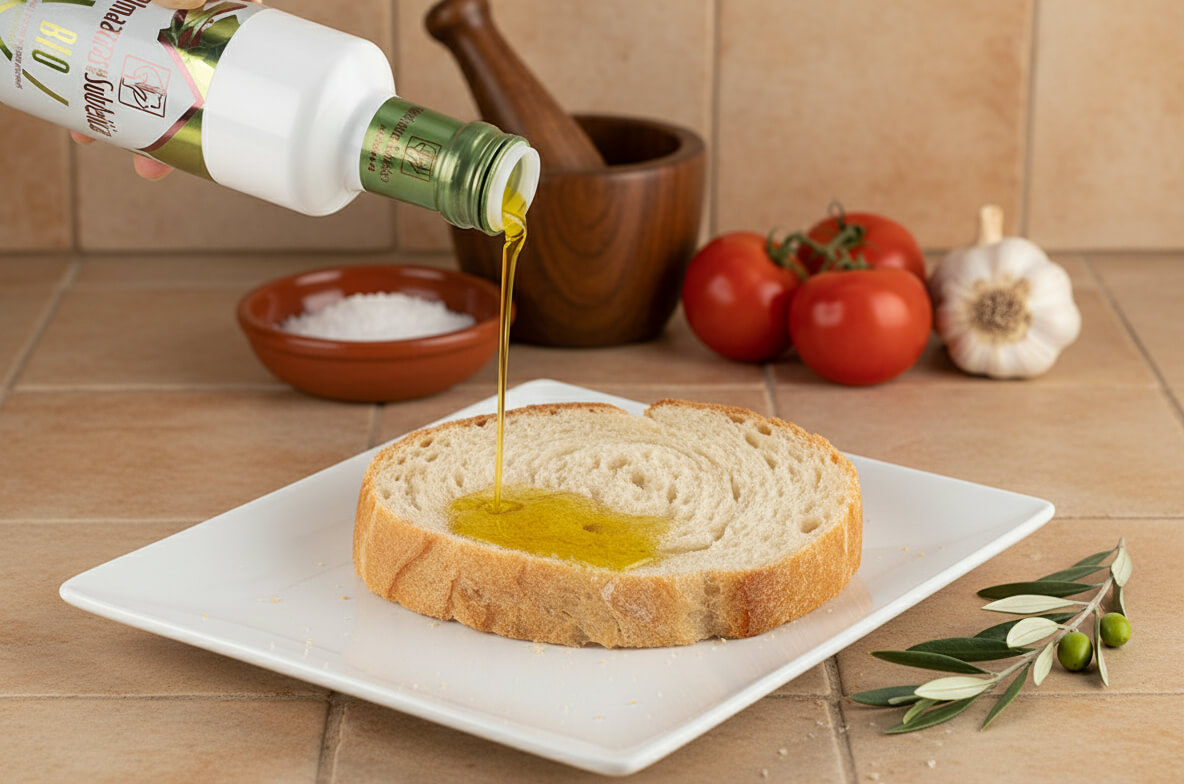
Extra virgin olive oil is much more than just a simple ingredient in the kitchen and one of the key elements of the highly regarded Mediterranean diet. It is no coincidence that throughout history it has been the most commonly used fat for cooking in Andalusia, and particularly in Córdoba. It is part of our culinary imagination and deeply rooted gastronomic tradition.
That’s why it’s not surprising that more and more studies are proving the multiple health benefits of olive juice for the body. Ultimately, consuming EVOO is not a luxury but a commitment to health through nutrition.
Rafael Moreno Rojas, Professor of Nutrition in the Department of Bromatology and Food Technology at the University of Córdoba and Director of the Mediterranean Gastronomy Chair, highlights that “unlike other oils, since it is not refined but truly natural, it retains its full anti-inflammatory capacity.”
He also points out that “it’s better to fry with EVOO than with other seed-extracted oils such as sunflower oil, because its smoke point —that is, the temperature at which the oil begins to degrade— is much higher. It also degrades more slowly during successive frying processes.”
Thus, olive oil offers excellent resistance and thermal stability. Its smoke point ranges between 190° and 210°, while that of sunflower oil is reached between 160° and 180°. Beyond these figures, toxic compounds such as acrylamides and aldehydes start to form.
However, Moreno Rojas warns that “the ideal frying point for EVOO is between 170° and 180°, as above that temperature it begins to lose polyphenols and natural antioxidants.”
Of course! Although we’re talking about a fat, it’s worth clarifying that, in this case, its consumption actually helps maintain a healthy weight. When frying with extra virgin olive oil, foods absorb less oil than when using other types. There are two main reasons for this: the higher density and stability of EVOO.
In addition, it objectively enhances the flavor of foods, both hot and cold, thanks to its palatability —in other words, its ability to be especially pleasant to the palate.
Ultimately, the organoleptic attributes of olive oil (color, aroma, texture, and flavor) encourage its consumption raw, combined with all kinds of vegetables, legumes,
meats, or low-calorie fish, which are especially recommended for diets aimed at weight loss.
Source of eternal youth
The list of bioactive properties potentially beneficial to health in EVOO is more than extensive. The aptly named “liquid gold” is characterized by a high content of monounsaturated fats, which have a double bond in their structure, making them liquid at room temperature. “The one present in the highest proportion is oleic acid, which makes up between 65% and 83% of its total composition. It helps reduce the risk of cardiovascular diseases and, consequently, mortality. It is also a powerful ally in lowering the so-called ‘bad cholesterol (LDL),’” explains the Professor from the University of Córdoba.
Furthermore, the presence of polyphenols among its minor components helps reduce oxidative stress, lowers the risk of neurodegenerative diseases and cancer, and regulates the proliferation of inflammation-related genes. They are also highly beneficial for maintaining a healthy gut microbiota, since polyphenols act as natural prebiotics that promote the growth of beneficial bacteria and keep pathogens at bay.
Vitamin E is also very present in extra virgin olive oil. But what does it provide to the body? It has strong antioxidant and anti-inflammatory properties and is associated with a lower risk of hyperglycemia and diabetes. In this regard, phytosterols also contribute to reducing insulin resistance and are fantastic allies for protecting bone health.
Finally, it is important to highlight that there is evidence of the anti-obesity power of oleacein, which helps reduce weight gain.